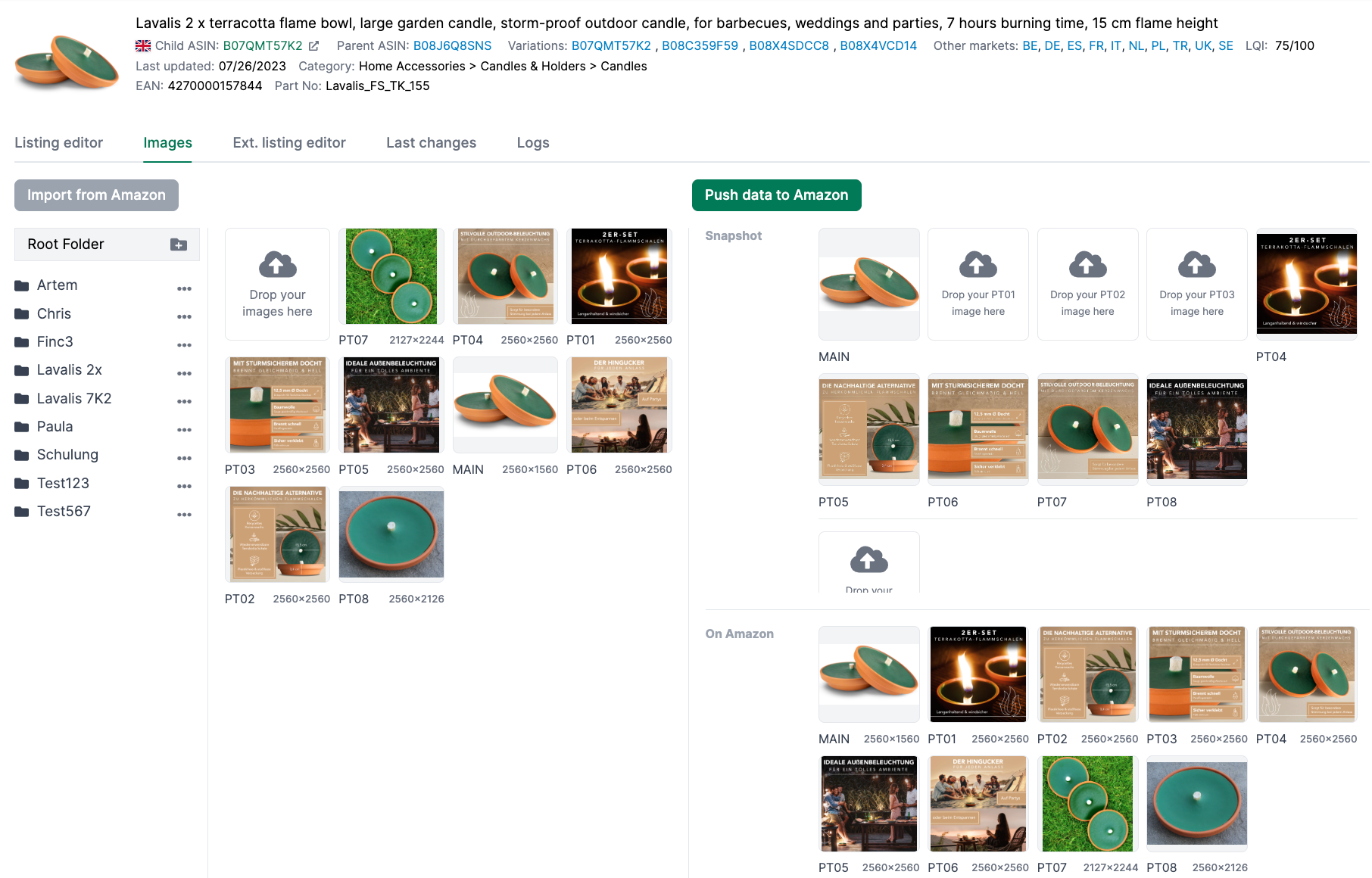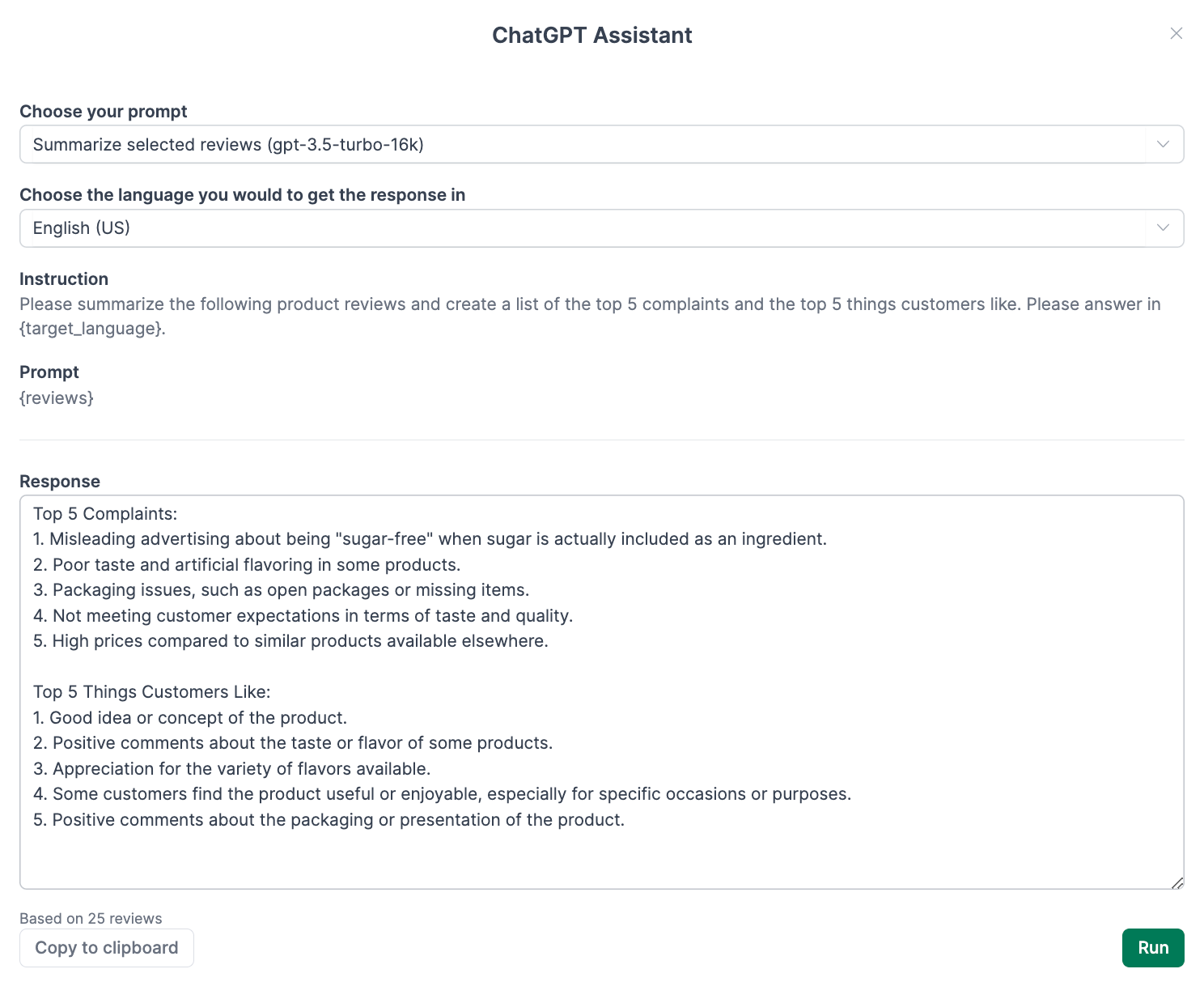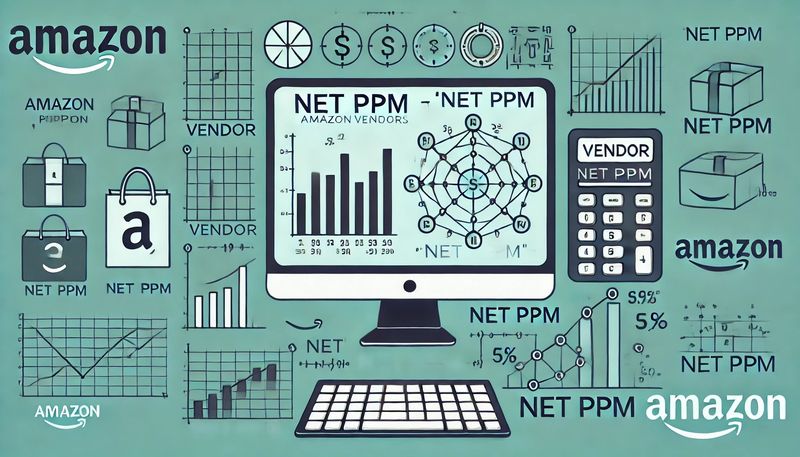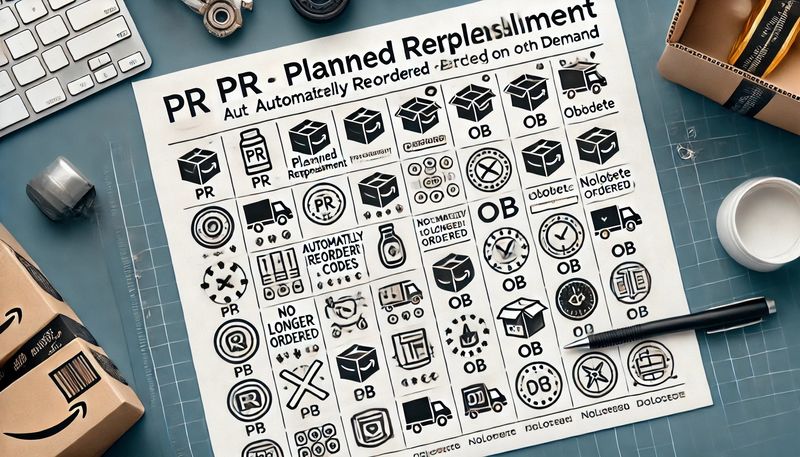In times of economic uncertainty, consumer restraint, and rising inflation, ensuring the profitability of your products as an Amazon vendor becomes even more crucial.
In this article, we will explain how to determine the profitability of each ASIN. We will then provide you with strategies to enhance the profitability of your products. This includes negotiating better conditions with Amazon, eliminating unprofitable products, and utilizing marketing initiatives.
Understanding Profitability
There are three key factors that influence gross profit:
- Your wholesale price to Amazon
- Coop agreement
- Chargebacks
In the following sections, we will discuss each of these components separately.
Verify the wholesale price to Amazon
Checking the wholesale price is a crucial step in understanding profitability. The wholesale price is the price at which you sell your products to Amazon. For an initial margin estimate, you should compare this price with the manufacturing costs. If your margin is insufficient to cover direct and indirect costs, you have a problem as a vendor, which coop agreements and chargebacks can further exacerbate.
Consider Coop Agreements
When calculating profitability, you must also consider the coop agreements for vendors. Coop agreements refer to discounts demanded by Amazon in the form of market development funds, cooperative agreements, and other services.
The majority of coop agreements are calculated as a percentage deduction from total revenue. This means they behave similarly to additional deductions from the wholesale price. Therefore, including coop agreements in the profitability calculation is crucial to get an accurate picture of your profit margin.
Incorporate Chargebacks
In addition to coop agreements, you need to consider potential chargebacks. Amazon imposes chargebacks for various reasons, such as late deliveries, faulty packaging, or policy violations.
To get an overview of chargebacks, click "Operational Performance" under the "Reports" section in Vendor Central. This will take you to a dashboard to view all chargebacks within a specific period. This allows you to determine which ASINs are causing which chargebacks.
The following simplified example demonstrates how to calculate the gross profit of each ASIN and the impact of coop agreements and chargebacks on the gross profit.
| Gross price (paid by the customer) | 99 EUR |
|---|---|
| Net price | 83.19 EUR |
| Amazon discount (40 percent) | 33.28 EUR |
| Amazon purchases item for | 49.91 EUR |
| MDF (10 percent) | 4.99 EUR |
| AVS (2 percent) | 1.00 EUR |
| Chargeback (1 percent) | 0.50 EUR |
| Amazon purchases item for | 43.42 EUR |
To complete the contribution margin calculation, you need to add the costs of internal processes and personnel expenses. These cost factors enable you to accurately assess whether a specific ASIN is profitable or leads to losses.
Note
Pay particular attention to products with high sales volume. Even though they generate high revenue, you need to verify if they are profitable per unit. If costs exceed revenues, these products result in significant losses.
Strategies to increase profitability
Sort out unprofitable products
An obvious strategy is to remove unprofitable products from your assortment or stop accepting orders for those items from Amazon. However, before doing so, you should ask yourself the following three questions:
1. Does the product have future potential on Amazon?
By thoroughly analyzing the current market situation, trends, and demand developments, you can determine whether a product has promising prospects. An essential factor is the selling price. The selling price needs to be high enough to achieve a profit margin while being attractive to customers. Additionally, customer perception plays a significant role. Positive reviews and feedback indicate whether customers value and appreciate the product.
If a product is unprofitable and lacks future potential, it's advisable to remove it from your assortment.
2. Can manufacturing costs be reduced?
Another way to increase profitability is by reducing manufacturing costs. Check if you can switch suppliers for better conditions or quality. If the product is manufactured in-house, consider whether it can be produced more cost-effectively in the Far East.
If it turns out that the manufacturing costs of an unprofitable product cannot be reduced, it's recommended to remove the product from your assortment.
3. Can price increases be passed on to Amazon?
Engage with your vendor manager and present information to explain the reasons for the proposed price increase.
If it's impossible to pass on price increases to Amazon, then consider discontinuing the product sale on Amazon.
In general, remove unprofitable products from your assortment if:
- the price pressure on the market side is too high, making price increases unrealistic
- price increases cannot be enforced on Amazon
- you are no longer competitive as a manufacturer
Avoiding Chargebacks
To increase your Amazon products' profitability, avoiding chargebacks is crucial. Vendors must adhere to specific guidelines when delivering to Amazon, and any violations can result in chargebacks.
Here's how to avoid chargebacks:
- Analyze and understand chargebacks: Examine the type and amount of chargebacks. Identify the products associated with chargebacks and determine if they can be prevented. You can find explanations for all chargebacks in our article on Amazon Chargebacks.
- Review internal processes: After analyzing and understanding your chargebacks, reviewing your internal processes is essential. This will help you identify underlying issues and take measures to prevent future chargebacks. For example, if you receive chargebacks due to "shipping preparation issues," consider improving your packaging. Add additional protective measures such as bubble wrap or similar materials.
- Dispute chargebacks: If you believe a chargeback was incorrectly applied, file a dispute. Keep in mind that you must dispute a chargeback within 30 days. You have 30 days to submit another dispute if your dispute is rejected. If the second dispute is also dismissed, there is no further recourse. Support your dispute with appropriate and accurate evidence. For instance, if you are charged back for "late delivery," provide evidence, such as screenshots from the carrier, demonstrating that the shipment arrived at the fulfillment center on time.
Avoiding price pressure
As an Amazon Vendor, you want to avoid Amazon continually making higher demands and attempting to purchase your product at increasingly lower prices. Such price pressure can significantly impact your profitability.
Price pressure can arise from three sources:
- Competitors lower their selling prices: A price war ensues when competitors reduce their prices, influencing the market price. Similar products' prices decrease, creating increased pressure to lower your own price to remain competitive. To minimize price pressure, it is essential to closely monitor the market and competitors' activities, enabling you to respond promptly to price changes.
- Other suppliers lower their prices: To avoid price pressure, it's essential to consider the influence of other suppliers on the market price. If you sell your products to wholesalers, they may resell them at lower prices, winning the Buy Box, which further lowers the average market price. In some cases, Amazon as a seller may also reduce its margin to match these lower prices. You can view Amazon's margin for each product in Vendor Central's Net PPM report. Nevertheless, as a vendor, you must ensure that Amazon's margin is sufficiently high. Otherwise, Amazon passes the pressure back to you, resulting in a decrease in your margin. Vendors have no control over Amazon's pricing strategy. However, you can revise the level of discounts you offer to other sellers. Ensure that the pricing model is consistent for all parties selling on Amazon.
- Amazon reduces prices: Amazon may reduce prices for various reasons. One of these reasons is to clear excess inventory. In such cases, Amazon lowers prices to sell products faster. These price reductions can be temporary and promoted as promotions. Another reason for price reductions is potential price actions in other distribution channels. Amazon matches prices to remain competitive if the same product costs less on other platforms. This approach is known as "price matching."
Avoiding customer returns
Another strategy to increase Vendor profitability on Amazon is to avoid returns. When customers frequently return your products, it has various effects on your profitability:
- Amazon retains the returns, leading to higher costs and losses for the company. These costs are passed on to the Vendor, affecting the Vendor's margin.
- Vendors incur costs for handling returns, including processing returns, inspecting products, and potentially refurbishing or selling off the goods.
- Also, in some cases, Amazon may block the affected product if the return rate is too high or specific quality standards are unmet.
To reduce returns, you should take various measures. One approach is to improve the product. Eliminate any defects or issues that lead to returns. Also, optimize the product detail page of the affected products and clarify any application errors. An informative product description helps minimize misunderstandings and disappointments.
Implementing price increases
Increasing prices is one way to boost the profitability on Amazon. If manufacturing costs have risen due to inflation or increased logistics costs, the higher costs must be passed on to Amazon.
Remember to adjust the recommended retail price and enforce the new price outside of Amazon. This way, Amazon's margin is not affected by the price increase, and Amazon can successfully pass on the increased prices to consumers.
Price adjustments can be made during the annual Amazon Vendor negotiations or at other times. To adjust prices, go to Vendor Central, click "Items," and then select "Edit Item Costs." Here, you can upload a price list with the new prices. However, Amazon often rejects price increases.
If Amazon rejects the price increase, you can take several measures:
- Upload the prices multiple times to make repeated attempts to enforce the price adjustments.
- Get in touch with your Vendor Manager and communicate your intentions.
Additionally, offer Amazon the opportunity to carry additional products previously considered "unattainable" to Amazon. Amazon is always highly interested in obtaining a Vendor's entire product range. By providing Amazon with additional products that expand their assortment, you strengthen your negotiation position and receive more significant support from Amazon for your price increase requests.
Keep an eye on your negotiation leeway, as it depends on various factors, such as the share of revenue within a category and the importance of your brand. Also, consider Amazon's margin, which you can review in the Net PPM report. If Amazon's margin is too low, they will not agree to a price increase.
Additionally, consider the risks associated with a price increase. A significant price hike may deter customers and lead to a loss of market share. Ensure that you consider the price sensitivity of your target audience and that the higher price remains attractive. Monitor the competition's response and ensure that your prices remain competitive.
Optimizing products
To optimize your offerings, you can take the following measures:
- Offer product bundles and larger packaging
- Promote profitable products for more visibility
- Optimize conversion rate
- Analyze customer reviews
Offer product bundles and larger packaging
Offering product bundles and larger packaging can improve the average selling price while reducing variable costs. Larger packaging and product bundles enable efficient logistics and shipping by accommodating more products in bigger packages, using available space better, and lowering shipping costs per unit.
Ensure that improved logistics and optimized shipping lead to increased sales. However, it's crucial to reduce the variable costs per unit; otherwise, higher sales numbers could result in a lower margin.
Promote profitable products to more visibility
To give profitable products more visibility, promote them strategically. For instance, offer attractive deals for these products during discount events like Prime Day. Although it might seem counterintuitive to sell the products at a lower price initially, you are leveraging the so-called Halo Effect. The Halo Effect is based on customers transferring positive experiences with a specific product to other products. By strategically promoting profitable products and convincing customers of their quality, the likelihood increases that they will try out different products from your brand.
Products with lower margins require a different marketing strategy. Avoid promoting them during peak sales; focus on programs like "Subscribe and Save" to encourage customers to commit to long-term subscriptions.
Optimize Conversion rate
To increase profitability, it's crucial to sell more products and increase the actual number of purchases relative to the number of visitors. Here's a reminder: higher sales numbers don't guarantee increased product profitability.
A high conversion rate offers several advantages:
- You generate more revenue with the same number of visitors.
- Amazon rewards products with high conversion rates with more visibility.
- Paid advertising becomes more efficient, reflected in lower CPC (Cost Per Click).
To improve the conversion rate, you must optimize your product listings. Here are some steps for optimizing your product listings:
- Use descriptive and clear product descriptions: Provide detailed and precise descriptions, highlighting the key features. Avoid unnecessary technical terms, and ensure that your description is easily understandable. Address frequently asked questions in the reviews directly in the product description.
- Use high-quality images: Utilize high-quality images to showcase your product from various perspectives. Each image added to your product listing should serve a specific purpose. You can skip images that don't provide additional information or evoke emotions. Add HD images, 360-degree views, and a video. In AMALYTIX, you can monitor the different images associated with your products and upload new ones.

- Include keywords: Use relevant keywords in your title, description, and bullet points. Incorporate both general keywords and specific keywords related to your product. In AMALYTIX, you can analyze an ASIN and receive a list showing the search terms that lead to clicks on your product.
- Add technical details: Include dimensions, materials, and weights in the product information. Customers want to know what they're buying, and this information helps them make purchasing decisions.
- Create appealing A+ content: Highlight what makes your product unique. Emphasize why customers should choose your product and the benefits it offers. Conduct A/B experiments to determine the impact of A+ content on your product listings.
Analyze customer reviews
By closely examining customer reviews, you gain valuable insights into the strengths and weaknesses of your products. Here are some ways you can utilize reviews:
- Product improvements: Carefully read customer reviews and comments about your products. Identify recurring themes or issues raised by customers. Use this feedback to make product improvements, adjust features, or address shortcomings.
- Customer service: Optimize your customer service to build customer trust and increase satisfaction. Although you, as a vendor, cannot respond directly to customer reviews, you can still address complaints or questions by providing additional information in the product description.
AMALYTIX assists you in monitoring your reviews. You receive notifications about new reviews, changes in ratings, recent comments, or deleted reviews.
Additionally, you can use the ChatGPT assistant to, for example, get a summary of the reviews. This way, you can quickly identify the strengths and weaknesses of a product at a glance:

Conclusion
Regularly assessing the profitability of your products on Amazon is of utmost importance. To determine the profitability of your products, conduct a detailed calculation, considering the selling price, coop agreements, and possible chargebacks. This will provide you with a precise overview of the financial viability, enabling you to make informed decisions.
To enhance the profitability of your products, take various measures: remove unprofitable products from your assortment, avoid chargebacks and price pressure, implement price increases effectively, and optimize your products.
By implementing these strategies, you can ensure the profitability of your Amazon business and maintain a competitive edge in the dynamic marketplace. Continuous monitoring and adaptability are crucial to thriving as an Amazon vendor.





